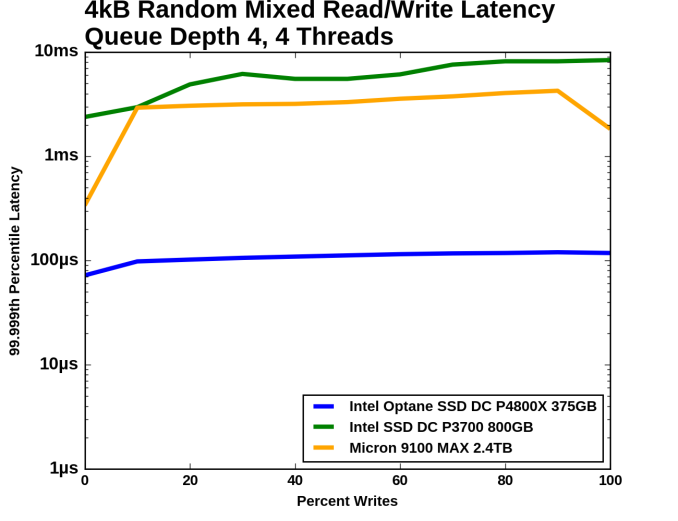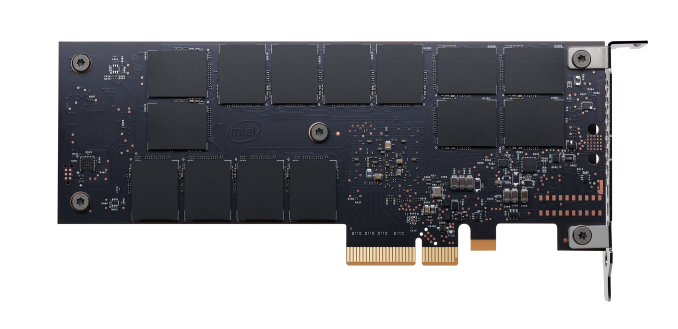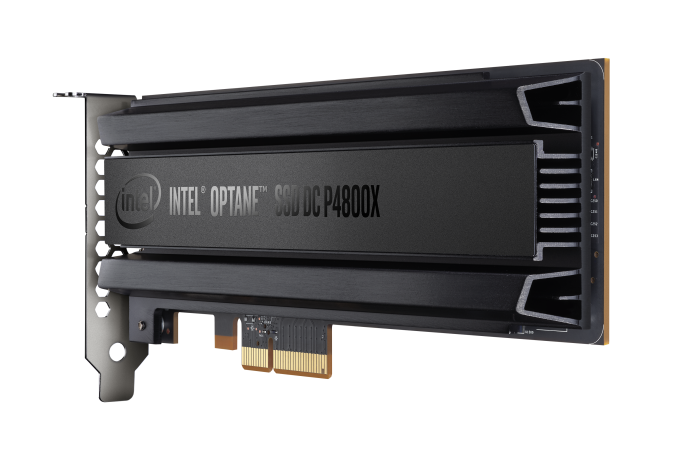The Intel Optane SSD DC P4800X (375GB) Review: Testing 3D XPoint Performance
by Billy Tallis on April 20, 2017 12:00 PM ESTFinal Words: Is 3D XPoint Ready?
The Intel Optane SSD DC P4800X is a very high-performing enterprise SSD, but more importantly it is the first shipping product using Intel's 3D XPoint memory technology. After a year and a half of talking up 3D XPoint, Intel has finally shipped something. The P4800X proves that 3D XPoint memory is real and that it really works. The P4800X is just a first-generation product, but it's more than sufficient to establish 3D XPoint memory as a serious contender in the storage market.
If your workload matches its strengths, the P4800X offers performance that cannot currently be provided by any other storage product. This means high throughput random access, as well as very strict latency requirements - the results Optane achieves for it's quality of service for latency on both reads and writes, especially in heavy environments with a mixed read/write workload, is a significant margin ahead of anything available on the market.

At 50/50 reads/writes, latency QoS for the DC P4800X is 30x better than the competition
The Intel Optane SSD DC P4800X is not the fastest SSD ever on every single test. It's based on a revolutionary technology, but no matter how high expectations were, very rarely does a first-generation product take over the world unless it becomes ubiquitous and cheap on day one. The Optane SSD is ultimately an expensive niche product. If you don't need high throughput random access with the strictest latency requirements, the Optane SSD DC P4800X may not be the best choice. It is very expensive compared to most flash-based SSDs.
With the Optane SSD and 3D XPoint memory now clearly established as useful and usable, the big question is how broad its appeal will be. The originally announcements around Optane promised a lot, and this initial product delivers a few of those metrics, so to some extent, the P4800X may have to grow its own market and reteach partners what Optane is capable of today. Working with developers and partners is going to be key here - they have to perform outreach and entice software developers to write applications that rely on extremely fast storage. That being said, there are plenty of market segments already that can never get enough storage performance, so anything above what is available in the market today will be more than welcome.
There's still much more we would like to know about the Optane SSD and the 3D XPoint memory it contains. Since our testing was remote, we have not yet even had the chance to look under the drives's heatsink, or measure the power efficiency of the Optane SSD and compare it against other SSDs. We are awaiting an opportunity to get a drive in hand, and expect some of the secrets under the hood to be exposed in due course as drives filter through the ecosystem.












117 Comments
View All Comments
melgross - Tuesday, April 25, 2017 - link
You obviously have some ax to grind. You do seem bitter about something.The first SSDs weren't much better than many HHD's in random R/W. Give it a break!
XabanakFanatik - Thursday, April 20, 2017 - link
I know that this drive isn't targeted for consumers at all, but I'm really interested in how it performs in consumer level workloads as an example of what a full Optane SSD is capable of. Any chance we can get a part 2 with the consumer drive tests and have it compared to the fastest consumer NVM-e drives? Even just a partial test suite for a sampler of how it compares would be great.Drumsticks - Thursday, April 20, 2017 - link
I imagine it will be insane - the drive saturates its throughput at <QD6, meaning most consumer workloads. It'll obviously be a while before its affordable from a consumer perspective, but I suspect the consumer prices will be a lot lower without the enterprise class requirements thrown in.This drive looks incredibly good. 2-4x more than enterprise SSDs for pretty similar sequential throughput - BUT at insanely lower queue depths, which is a big benefit. At those QDs, it's easily justifying its price in throughput. Throw on top of that a 99.999th% latency that is often better than their 99th% latency, and 3D Xpoint has a very bright future ahead of it. It might be gen 1 tech, but it's already justified its existence for an entire class of workloads.
superkev72 - Thursday, April 20, 2017 - link
Those are some very impressive numbers for a gen1 storage device. Basically better than an SSD in almost every way except of course price. I'm interested in seeing what Micron does with QuantX as it should have the same characteristics but potentially more accessible.DrunkenDonkey - Thursday, April 20, 2017 - link
Well finally! I was waiting for this test ever since I heard about the technology. This is enterprise drive, yeah, but it is the showcase for the technology and it shows what we can expect for consumer drive - 8-10x current SSD speeds for desktop usage (that is 98% 4-8k RR, QD=1). That blows out of the water everything in the market. Actually this technology shines exactly at radon joe's PC, while SSDs shine only in enterprise market (QD=16+). Can't wait!Meteor2 - Thursday, April 20, 2017 - link
But don't we say SATA3 is good enough and we don't really need (for consumer use) NVMe? So what's the real benefit of something faster?DrunkenDonkey - Thursday, April 20, 2017 - link
All you want (from desktop user perspective) is low latency at low queue depth (1). NVME helps with that regard, tho not by a lot. Equal drives, one on sata, one on nvme will make the nvme a bit more agile resulting in more performance for you. So far no current ssd is ever close to saturate the sata3 bus in desktop use, this one, however, is scratching it. Sure, it will be years till we get affordable consumer drives from that tech, but it is pretty much the same step forward than going from hdd to ssd - first ssds were in the range of 20ish mb per second, while hdds - about 1.5 in these circumstances. Here we are talking a jump from 50 to close to 400+. Moar power! :)serendip - Thursday, April 20, 2017 - link
Imagine having long battery life and instant hibernation - at 400 mbps, waking up from hibernation and reloading memory contents would take a few seconds. Then again, constantly writing a huge page file to XPoint wouldn't be good for longevity and hibernation doesn't allow for background processes to run while asleep. I'm thinking of potential usage for XPoint on phones and tablets, can't seem to find any.ddriver - Friday, April 21, 2017 - link
Yeah, also imagine your system working 10 times slower, because it uses hypetane instead of ram.And not only that, but you also have to replace that memory every 6 months or so, because working memory is much more write intensive, and this thing's endurance is barely twice that of MLC flash.
It is well worth the benefit of instant resume, because if enterprise systems are known for something, that is frequently hibernating and resuming.
tuxRoller - Friday, April 21, 2017 - link
They didn't say replace the ram with xpoint.It's a really good idea since xpoint has faster media access times so even when it's a smaller amount it should still be quite a bit faster than nand.